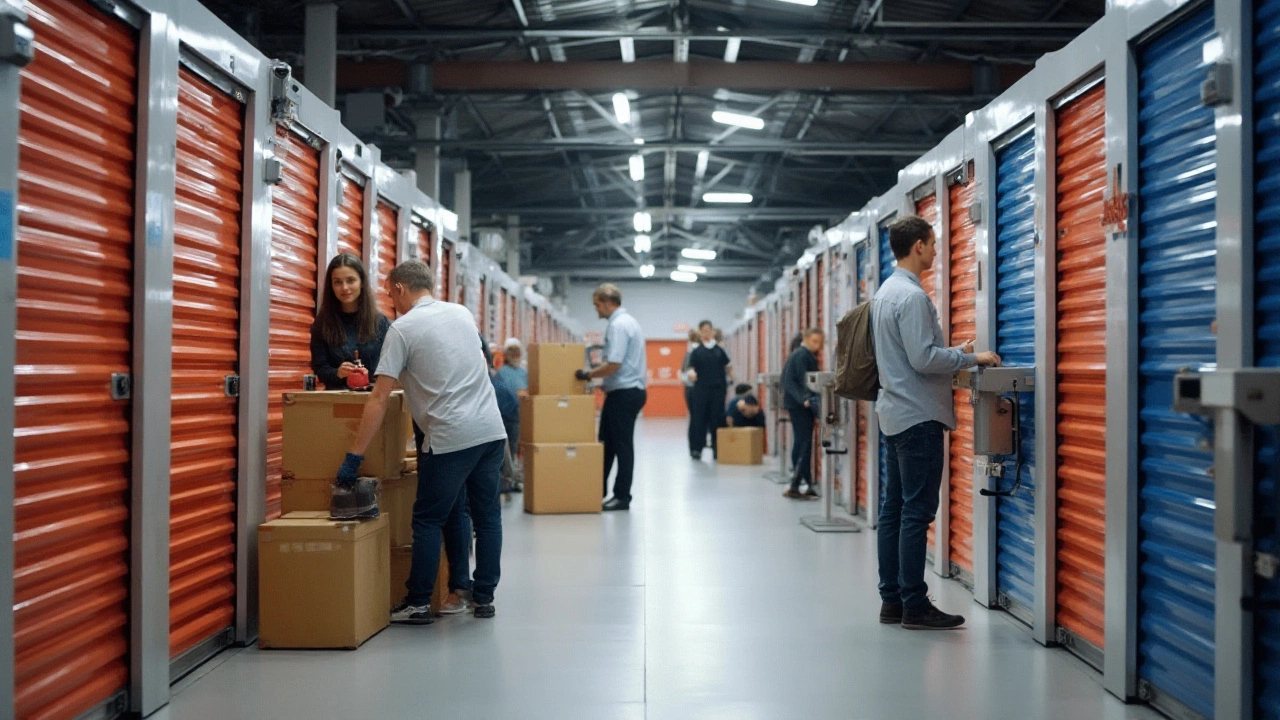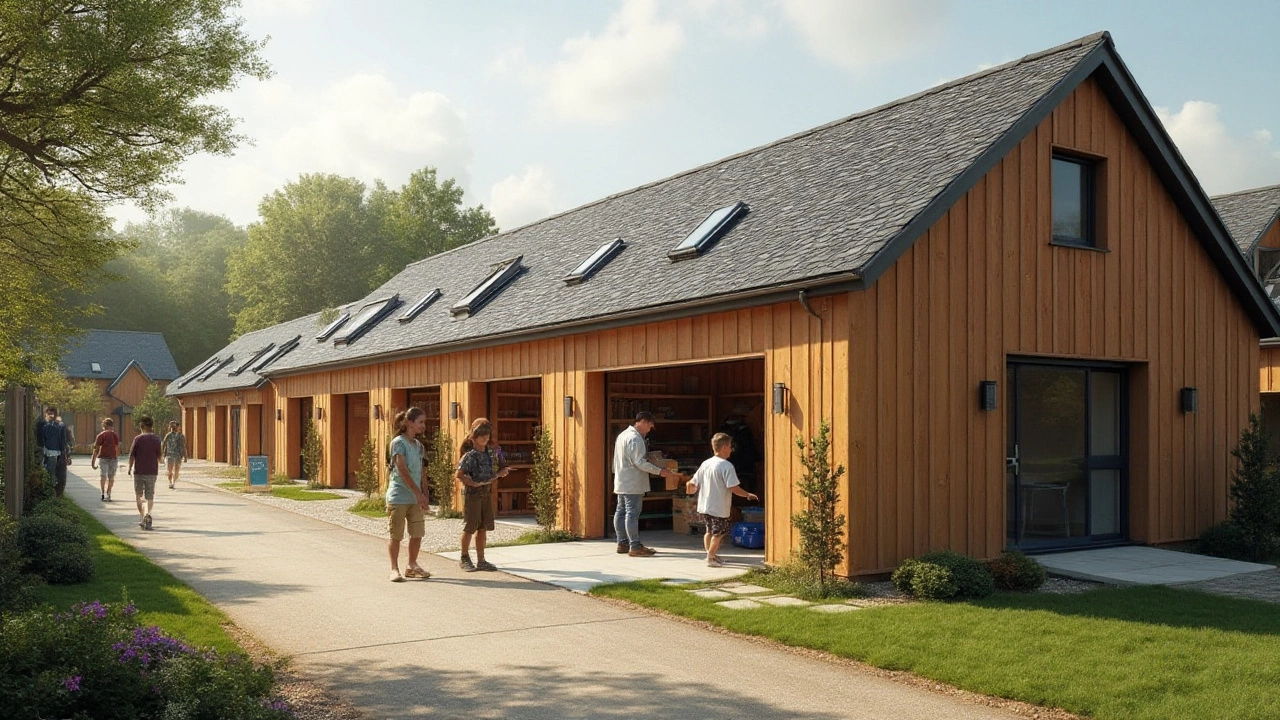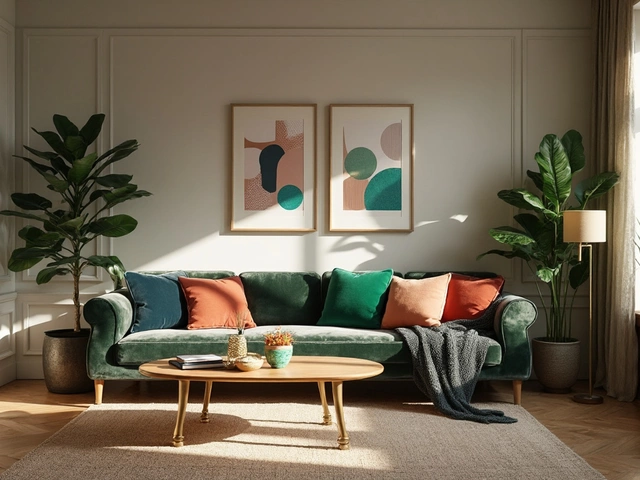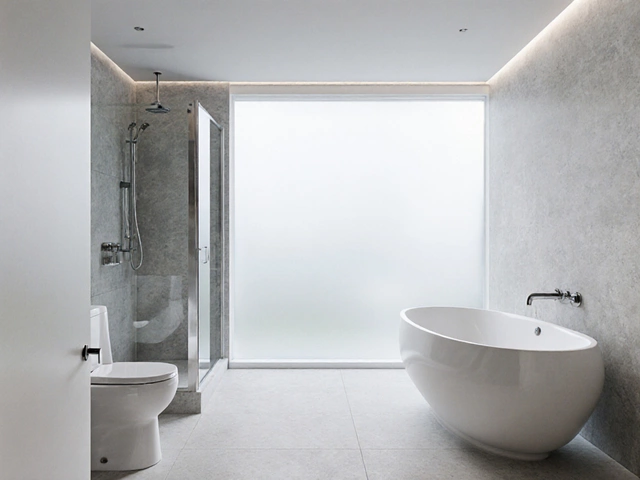Is Long-Term Storage a Wise Investment?

In our ever-changing lives, clutter seems to be the only constant. While some find decluttering therapeutic, others consider their belongings as invaluable memories or future necessities. This is where long-term storage becomes an intriguing option. But is it truly worth it? From families downsizing their homes to globetrotters preserving their prized possessions, the appeal of long-term storage is evident.
Before jumping in, it's crucial to understand what long-term storage entails and how to choose wisely. The costs, types of facilities, and even the security features play a pivotal role in the decision-making process. So, whether you're trying to make room for a new family member or safeguarding antique furniture, understanding these elements will arm you with the knowledge to make a sound investment.
- Understanding Long-Term Storage
- Types of Storage Solutions
- Cost-Benefit Analysis
- Security and Accessibility
- Tips for Maximizing Storage Use
Understanding Long-Term Storage
Long-term storage isn't simply about stashing away old furniture or childhood memorabilia; it's a strategic solution for managing the excess that life often brings our way. The facilities that offer these services come in various forms, from climate-controlled units to expansive warehouse spaces. This versatility means there's a storage answer for practically every need, making it a popular choice for anyone undergoing a major life transition or simply looking to organize and declutter.
At its core, long-term storage revolves around the idea of safekeeping. People often wonder if storing possessions away from home is necessary or just an additional expense. Yet, when faced with scenarios such as relocating for work, traveling abroad for extended periods, or even undertaking home renovations, the utility of having a safe place to store belongings becomes evident. It's about creating a buffer between life's changes and the personal items we hold dear.
There are also distinct categories of storage facilities. They range from the typical self-storage lockers to more specialized services like valet storage, where items are picked up from your doorstep and transported to a secure location. Each type of storage offers different perks, and costs can vary significantly depending on factors like size, location, and amenities provided. For instance, climate-controlled units are often more expensive due to the technology used to maintain a stable temperature and humidity, which is crucial for preserving sensitive items like antique wood or valuable artwork.
"The convenience of long-term storage solutions can transform a packed apartment into a more livable space," remarks Sarah Thompson, a storage expert and author specializing in modern minimalistic living. "But it's important to evaluate if the items stored are worth the ongoing cost or if they’re better off being sold or donated."
There's also the peace of mind that comes with security. Modern storage units often boast robust surveillance systems, gated access, and sometimes even individual alarms for units. However, customers should always inquire about insurance policies for stored items to ensure that even in the rare case of damage or theft, their possessions are covered. Knowing what security measures are in place can strongly influence a customer’s satisfaction and confidence in their choice of storage solution.
Let's not forget the factor of accessibility, which varies greatly among storage facilities. Some offer 24/7 access, which is great for those who might need to retrieve or store items outside of standard business hours. Others restrict access to specific times, aiming to enhance security. For people who often need to add to or remove from their stored items, this is a critical consideration. Balancing accessibility with security can directly impact the decision of which storage solution to choose.
Types of Storage Solutions
When considering long-term storage, it's vital to explore the array of solutions available. Each option serves different needs and understanding their distinctions can lead to a more strategic choice. Firstly, there are the traditional self-storage units. These are ubiquitous and offer flexibility in terms of size and access. Many storage facilities provide climate-controlled environments, an essential factor if you're storing delicate or valuable items. Often, this kind of storage is marked by its convenience; you drive up, unload, and have the freedom to access your belongings as often as needed.
Then we have portable storage solutions. Popularized by companies that deliver the storage pod to your location, this type can be a fantastic choice for those facing a move or renovation where access to stored items is less frequently needed. The pods are collected and stored in a secure warehouse after you fill them, blending convenience with flexibility. The rise of this innovation meets a growing demand for temporary, yet long-lasting storage solutions that adapt to life's hustle and bustle.
For those with more specialized needs, there are also vehicle storage options. High-end vehicles, boats, or RVs benefit from tailored facilities often found in these specialized storage venues. They include added security measures and sometimes even maintenance services to keep your treasures in peak condition until they're needed again. Another niche offer is document storage, essential for businesses that need to archive vital records securely over long periods.
Storage solutions vary in their accessibility and security features, from key-pad entries and surveillance for the typical storage facility to more advanced options for premium storage services. These variations can greatly impact the ease and security of your storage decisions. As stated by the U.S. Census Bureau, over 11% of households used a storage unit in the past year, reflecting a significant trend towards these dedicated solutions.
An expert once commented in an industry report, "Long-term storage isn’t just about finding a place to hide things; it’s about preserving what's valuable and navigating life's transitions with flexibility." This wisdom speaks to why people increasingly invest in storage as more than a mere afterthought in their living circumstances.
| Storage Type | Main Features |
|---|---|
| Self-Storage Units | Flexible access, climate control, varied unit sizes |
| Portable Storage | On site loading, warehousing options, convenience for moves |
| Vehicle Storage | Specialized facilities, enhanced security, maintenance services |
| Document Storage | Secure archiving, often used by businesses |

Cost-Benefit Analysis
When considering long-term storage, costs remain a pivotal factor in assessing its true value. It's not just about the monthly fee; other financial aspects like access charges, insurance, and potential late fees also need scrutiny. Many facilities offer competitive rates, but it’s essential to dig deeper into what’s included. Some might offer climate control and 24/7 access, while others charge extra for basic amenities. Storage unit prices often fluctuate with location; urban centers typically are pricier than their rural counterparts. An excellent approach is to list all potential costs and compare them to the value you place on the stored items. For some, preserving family heirlooms or seasonal equipment might justify the expenditure, but others might find selling or donating belongings more beneficial.
Financial considerations don't end at direct payments. There's the opportunity cost of storing items that might depreciate over time or could have been invested elsewhere. For example, a study by the Self Storage Association found a considerable percentage of stored belongings include unused furniture and neglected electronics, items that could potentially lose value faster than one realizes. This depreciation should weigh into your cost-benefit calculation. On the flip side, some items, like collectibles, might appreciate, making the investment worthwhile. Consider creating a detailed inventory with potential values to gauge whether storage solutions serve your financial interests in the long run.
Non-Financial Benefits
The benefits aren't solely financial; peace of mind often plays a significant role. Knowing that your possessions are in a secure location often outweighs the costs for many individuals. This is especially true for those facing life transitions such as a cross-country move or an extended stay abroad. Storage units provide a buffer space, offering flexibility without forcing hurried decisions about what to discard or sell. As Michael Zimmerman, a renowned real estate consultant, once said,
"The true cost of storage isn’t just dollars and cents; it’s about the ability to manage life’s unpredictable twists and turns with grace."This perspective underscores the broader advantages of long-term storage, making it evident that the value isn't just assessed in monetary terms but also in quality of life.
Hidden Costs
When evaluating the investment, it's wise to account for hidden costs that might not be readily apparent. Many facilities lure users with attractive introductory offers, which might increase significantly after the initial period. Reading the fine print is paramount to understanding potential price hikes or surcharges. There’s also the added expense of personally moving items into storage if the facility isn’t strategically located. Some might underestimate the time and effort required to pack, transport, and later retrieve their belongings. A helpful tip is to ask friends or family about their experiences, providing a clearer picture of potential pitfalls.
The larger scope of decluttering through long-term storage suggests the necessity of thoughtful consideration. It isn’t merely a financial decision but one that encompasses various aspects of life, including emotional impact and future plans. Weighing both tangible and intangible elements will help navigate whether these storage solutions are, indeed, a wise choice for you.
Security and Accessibility
When it comes to long-term storage, security and accessibility are two sides of the same coin. Everyone wishes for a safe place where their belongings can be stored without constant worry of damage or theft. Modern storage facilities have risen to the challenge, boasting advanced security measures like 24/7 monitoring through high-definition cameras, electronic gate access, and even individual alarms for units. These features ensure that customers' possessions remain secure, but there’s more to it. Service providers often emphasize security to create trust, which is crucial for people deciding to use long-term storage solutions.
In a world where everything seems to move at lightning speed, accessibility is a must. Most storage facilities understand that customers need flexible access, offering extended hours or even 24/7 entry. This convenience means you can grab your summer gear or documents whenever necessary—in the early hours of a Saturday morning or late on a weeknight. However, accessibility isn’t just about open hours. It's about facility location, too. Strategically placed facilities ease the burden of long drives, saving time and making it easier to pop in whenever you like, reducing logistical headaches.
With stories like, “
Having a storage unit with excellent security and accessibility was a lifesaver during my extended travels,” says travel blogger Emily Rodriguez, “It allowed me to enjoy my trips without worrying about my belongings back home.”, we see the personal impact of these features. Additionally, most facilities provide climate-controlled environments to prevent damage from extremes of temperature or humidity, an often overlooked aspect of long-term storage. This can be essential for storing delicate documents, electronics, or heirloom furniture. Isn't it reassuring to know your grandmother's dining set is not swelling and shrinking with the changing seasons?
Facilities also employ well-trained security personnel alongside technology. This human element in security ensures that even the most sophisticated systems don’t miss personal, on-the-spot insights only a vigilant human eye can catch. An unexpected benefit of maintaining rigorous security protocols is the potential for reduced insurance premiums. Often, if your belongings are stored in a well-protected facility, insurance companies may offer lower rates. Knowing your possessions are not just protected but potentially saving you money can offer extra peace of mind. Long-term storage solutions now focus on a holistic approach—security isn't just a feature; it becomes a peace enveloped within easy accessibility, creating an overall seamless experience for users.

Tips for Maximizing Storage Use
Maximizing the efficiency of long-term storage can feel like solving a complex puzzle, but with some strategic planning, anyone can transform a cluttered mess into a well-organized sanctuary. The first rule is to declutter before you store. Take the time to sort through your items and sort out what truly needs to be kept. This not only reduces the volume of items you need to store but also saves you money, since storage solutions often charge by the square foot.
Once you've tackled decluttering, consider creating an inventory of your items. A simple spreadsheet can do wonders. List each item and its location within the unit so you can find things without tearing the place apart. Label boxes clearly and ensure that the labels face outwards. In the end, knowing exactly what you have on hand—and where to find it—will save you countless hours and frustrations.
Using vertical space effectively is another key strategy. Invest in sturdy shelving units, preferably adjustable ones, to stack boxes and totes upwards rather than spreading everything out across the floor. By doing this, you not only keep your belongings safe from potential floor damage but also optimize the space available. A local storage expert suggests,
Your storage space is like a book—you have to think in chapters or shelves to keep it readable and accessible.This perspective can profoundly change the way you view your storage area.
For those storing valuable items, consider the importance of climate control. Many storage solutions offer climate-controlled units that maintain a stable temperature and humidity, safeguarding sensitive items like electronics, artwork, and important documents. Though these units typically come with a higher price tag, the peace of mind they offer can be worth the extra expense, ensuring the longevity and safety of your possessions.
Not all items are suited for long-term storage, so it's essential to avoid storing perishables and hazardous materials. Not only can these items deteriorate and cause damage, but they can also attract pests or violate storage facility regulations. Always double-check with your facility about their specific rules to ensure compliance and avoid any unnecessary fines or issues.
Finally, pay attention to accessibility. When arranging your storage unit, think about the items you may need to access frequently and place them in easily reachable locations. Large items that are rarely needed can reside in the back or at the bottom of stacks. Rotate seasonal items—such as holiday decorations or winter clothes—to the forefront as needed, keeping your storage space dynamic and functional throughout the year.





